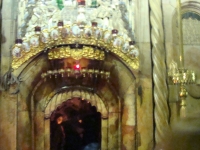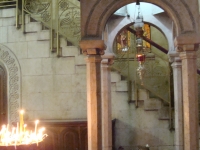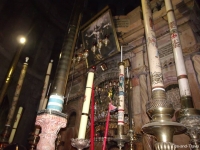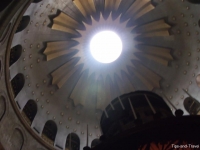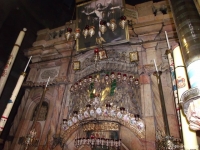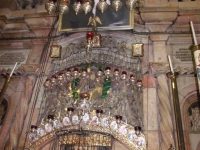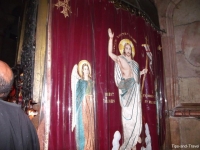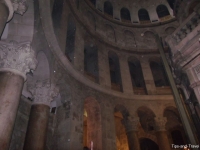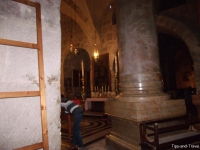The Holy Sepulchre is, according to Christian tradition, the tomb of Christ, that is to say, the cave where the body of Jesus of Nazareth was laid on the evening of his death on the Cross. It is said that the Emperor Hadrian had built in the second century, a temple dedicated to Venus on the location of the Holy Sepulchre to conceal the tomb where Jesus was buried. Constantine the Great, the first Christian emperor, replaced the temple by a church. A marble shrine was built above the tomb and it is this that we can see today. In the following years, a series of commemorative buildings draw a path through which the pilgrims slip in the life, death and resurrection of the Messiah, it was the place of pilgrimage in the Middle Ages. Jerusalem was under Muslim rule from the VII century, so they perceived an entrance fee from each pilgrim. Today, we found there two successive pieces, as in Jewish burials from the Roman period: the Chapel of the Angel, where the body was prepared (washed, perfumed) and the Tomb Room.
Tips
Usually the Holy Sepulchre is open at 4:00 and closes at 19:00 from October to March and 21:00 between April and September. In the evening, at the time of closing, the three sacristans (one representative for each community) are present, to decide who will open the next day. The opening is in turn of the three communities.
Holy Mass presided by the Latin in the Edicule of the Holy Sepulchre begins at 4:30 am and follows every half hour until 7:45. At 8:30 the brothers celebrate the Mass of the day sung in the antechamber of the Edicule. Simultaneously there is the Holy Mass at the Calvary, in the right aisle from 5:00 to 6:30. Every day at 16.00 the Franciscan community do its daily procession in the Basilica of the Holy Sepulchre.
